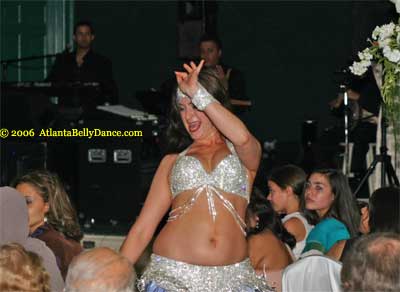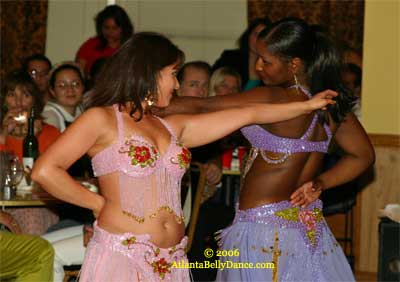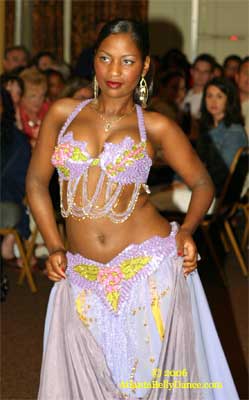| |
|
 |
Home >> Overview >> Choreography vs. Improvisation
Choreography vs. Improvisation
|
Soloists performing American Restaurant style may use either choreography or improvisation. Dancers lucky enough to perform with a live band will usually improvise because it's too difficult to predict exactly how a band will interpret a particular piece of music, and will rarely have time to practice with them.
|
Certain environments such as restaurants and birthday parties require an ability to deal with the unexpected, as tipping and waiters or the occasional photo-shoot, so improvisation is usually the preferred approach in these settings. |

|
|
Troupes performing in American Restaurant style will usually use choreography to facilitate dancing together as a group, and many dance teachers enjoy exploring the creative options in formations, floor patterns, and roll-offs presented by creating choreography for a group of people. Occasionally, pieces in a show may provide an opportunity for a "gang solo" in which each dancer does her own thing, or a piece may be used as a series of mini-solos in which each dancer takes a turn coming forward to dance for 4-8 measures.
|  |
|
These are not the usual troupe format, but they do exist. Many troupe performances are based primarily on choreography but incorporate a small amount of such improvisation, in particular for a drum solo section.
Even for solo dancing, the complexity of classical Egyptian music with its frequent rhythm shifts makes it advisable to use choreography to interpret the many layers and subtleties. This is especially appropriate when dancing to a song that the performer is inexperienced in using.
Even top professionals in Egypt regularly use choreography rather than improvisation for their shows.
Some dancers will choreograph the primary melody sections, but leave the improvised solo instrumental segments unstructured for spontaneous dancing.
|  |
A special kind of dance style is used by some american tribal style dancers, where a "lead dancer" signals her peers which move to use next. But as Tribal bellydance has grown in popularity, more Tribal troupes are faced with the challenge of presenting their dance in larger venues. Increasingly, many troupes have turned to fully choreographed performances for a greater impact when on the stage, leaving their improvisational skills to smaller venues.
(Source: www.mandalatribal. com/classes/workshops)
(Main source: www.shira. net/styles2.htm)
|
|
|





